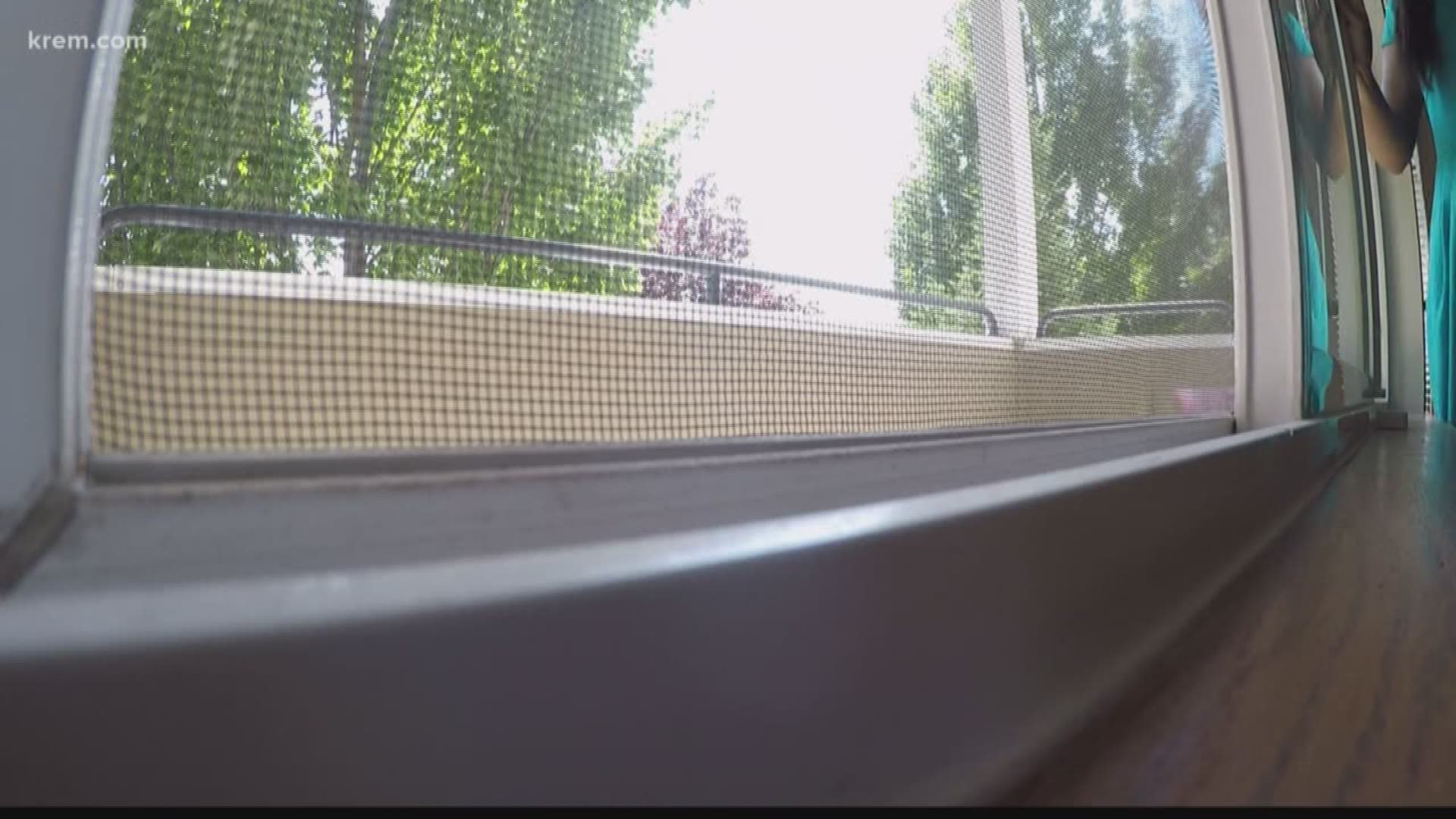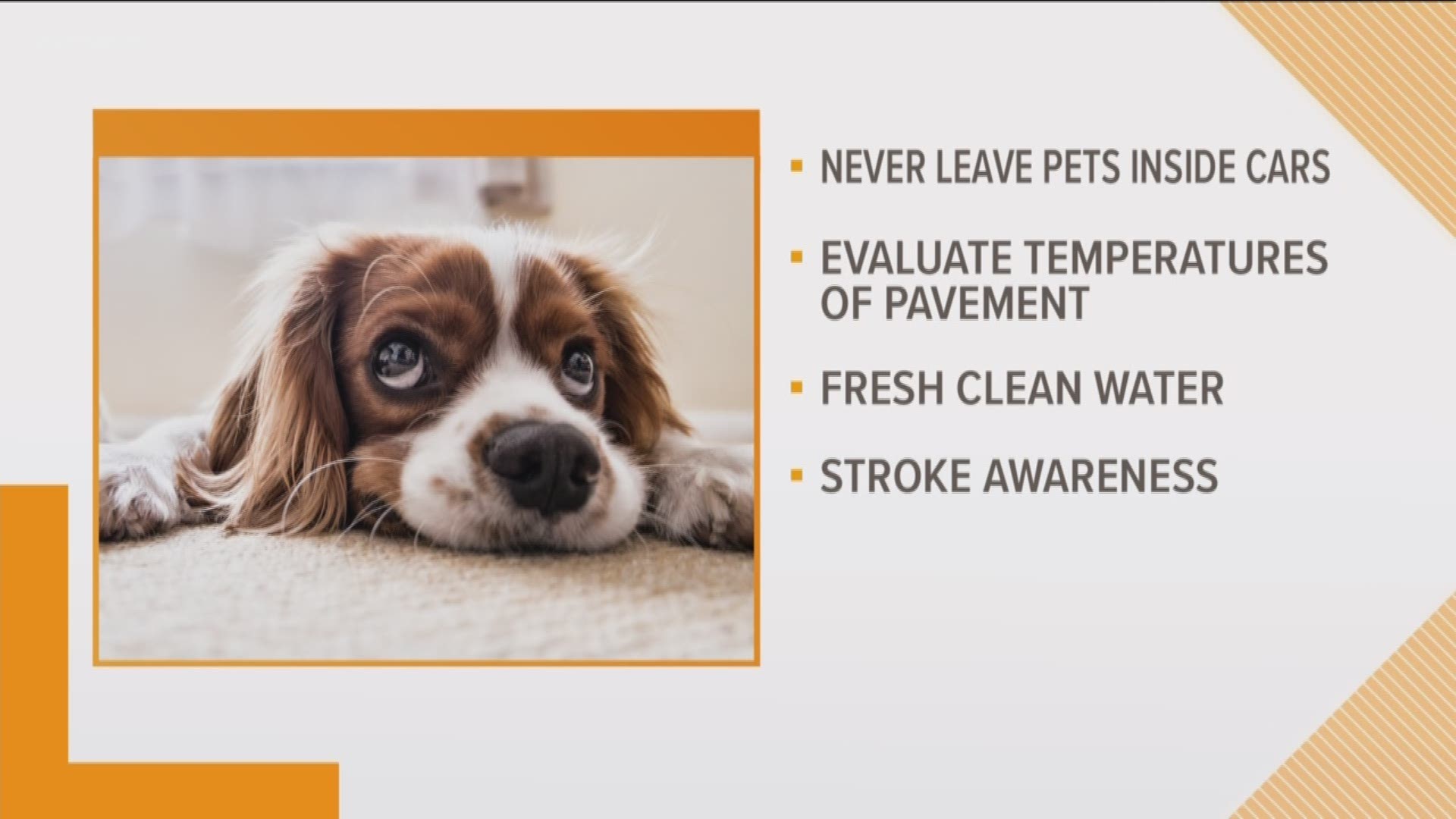SPOKANE, Wash. — August is bringing hot and dry weather to the Inland Northwest. The summer temperatures and prevalence of storms create ideal conditions for wildfire starts.
Spokane’s air quality sat in the “unhealthy for some groups” range on Sunday morning due to smoke from two fires burning more than 13,400 acres on the Colville Reservation near Keller, Washington.
The Spokane Regional Clean Air Agency says the air quality has since worsened "Unhealthy" range on Monday.
As of Tuesday morning, the air quality in Spokane is "unhealthy for some groups."
The Inland Northwest lost almost the entire month of August due to wildfire smoke last year.
In August 2018, there were at least 11 days of unhealthy air in the Spokane area. Four of them were very unhealthy and one day was even hazardous.
Staff from the Spokane Regional Health District say there is no safe level of exposure to particulate matter from wildfires.
The agency says Spokane averages about 355 days in the healthy air quality range, leaving an average of 10 days a year with unsafe levels for those at risk.
Here is what you need to know as wildfire smoke returns to Spokane this month.
What is the Air Quality Index (AQI)?
The Air Quality Index, or AQI, is a measuring stick developed by the Environmental Protection Agency that goes from 0 to 500.
The EPA calculates the AQI for five major pollutants: ground-level ozone, particle pollution, carbon monoxide, sulfur dioxide and nitrogen dioxide. Ground-level ozone and airborne particles are the two pollutants that pose the greatest threat to human health.
Once the AQI is measured, the EPA labels the air as Good, Moderate, Unhealthy for Sensitive Groups, Very Unhealthy, and Hazardous.
A reading below 50 means the air is in the “good” range, or safe for everyone.
If the AQI is above 300, that means the air is hazardous.
Air quality that is moderate, between 51 and 100, means the pollution poses a moderate health concern to a very small number of people who are unusually sensitive to air pollution.
Unhealthy for sensitive groups, between 101 to 150, means a members of sensitive groups may experience health effects but the general public is not likely to be affected. Sensitive groups include children, older adults, and people with heart or lung conditions.
Unhealthy air quality, between 151 to 200, means everyone may begin to experience health effects while members of sensitive groups may experience more serious health effects.
Very unhealthy air means everyone may experience more serious health effects, while hazardous air is deemed an emergency where the entire population will likely be affected.
What you should do when the air is unhealthy or hazardous
During days of hazardous or unhealthy air, some people may have to be outside.
Health officials have some recommendations for protecting yourself. They say you should wear a mask or respirator rather than a bandanna.
Masks that protect your lungs from smoke damage have the letter “N” followed by a number like 95 or 100. A N-95 or 100 mask will filter out most particles.
Masks should also have two straps for a better fit. Men with beards may need to be more cautious since beards may hinder the mask’s ability to form a seal, according to health experts.
Masks can help protect you from the smoke, but health experts encourage you to stay inside away from pollution when air quality reaches unhealthy or hazardous levels.
Keeping your windows and doors closed and using an indoor high-efficiency HEPA filter can also help keep indoor air as clean as possible.
A DIY air filter for wildfire smoke can be made at home for less than $20.
All you need to do is buy what’s called a MERV 13 or FPR 10 furnace filter and tape it to the back of a box fan. The filters sell for about $15. Don’t worry if you don’t have any tape because the suction from the fan should make the filter stick to the back.
Air filters should be used in your bedroom or in the room where you spend the most of your time.
Try running your air conditioner and set it to re-circulate the air -- the idea is to keep the air moving and keep it cool.
If you don't have air conditioning, health officials said you should close your curtains and blinds, turn on a fan, or go to a family member's or friend's house with air conditioning.
The health department has also cautions people to not add to indoor pollution. Avoid using food boilers, candles, incense, fireplaces or gas stoves when it's smoky.
Should I exercise?
You will want to limit outdoor exercise when the air quality is unhealthy.
The Mayo Clinic says those who exercise outdoors should avoid doing so or reduce the intensity and duration of the workout when an air quality alert has been issued.
Air pollution levels tend to be highest near midday or in the afternoon, so outdoor exercise should especially be avoided during these times.
The Mayo Clinic recommends varying your routine with occasional indoor activities, especially on days with poor air quality.
Those with asthma, diabetes or other health conditions should ask their doctor when it is safe to exercise.
The unhealthy air quality from wildfire smoke can also take a toll on your pets and even cause some serious health issues.
Veterinarians say pet owners should keep animals inside and limit their excise when air quality is at unhealthy levels.
Some signs that your pet might be having difficulty include:
- Coughing
- Sneezing
- Watery eyes
- Difficulty breathing
- Pet is quieter than normal
- Not wanting to eat or drink
Why is the air quality not updated automatically?
Air quality is updated every hour. The Current Air Quality Index uses the Nowcast calculation, which measures the last 12 hours with the most recent hours given more weight to better reflect current conditions.
During rapidly changing situations such as a new wildfire or dust storm, rapid deterioration in the Current Air Quality is reflected in the air quality rating.
There will be a lag time in reflecting worsening or improving conditions.



